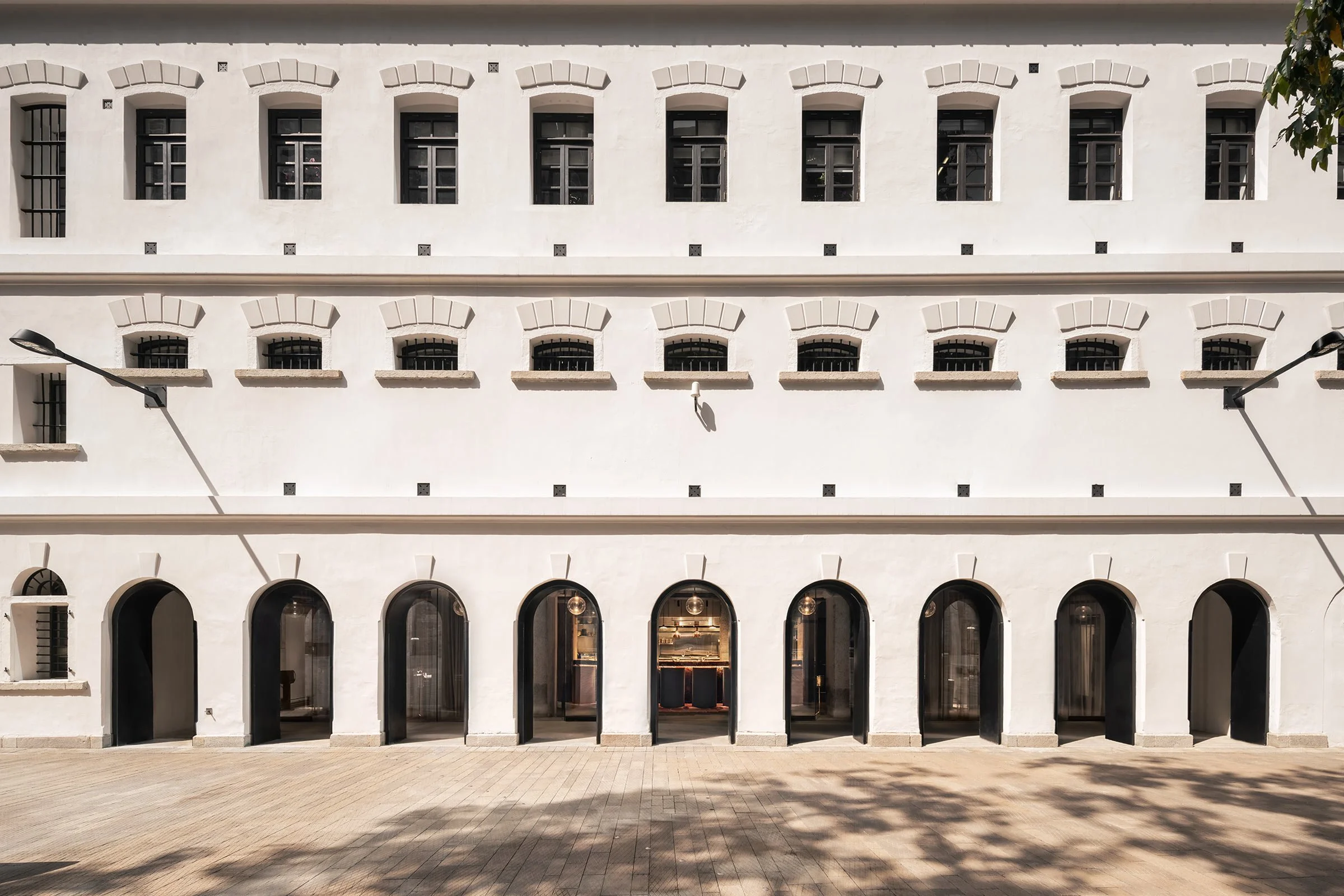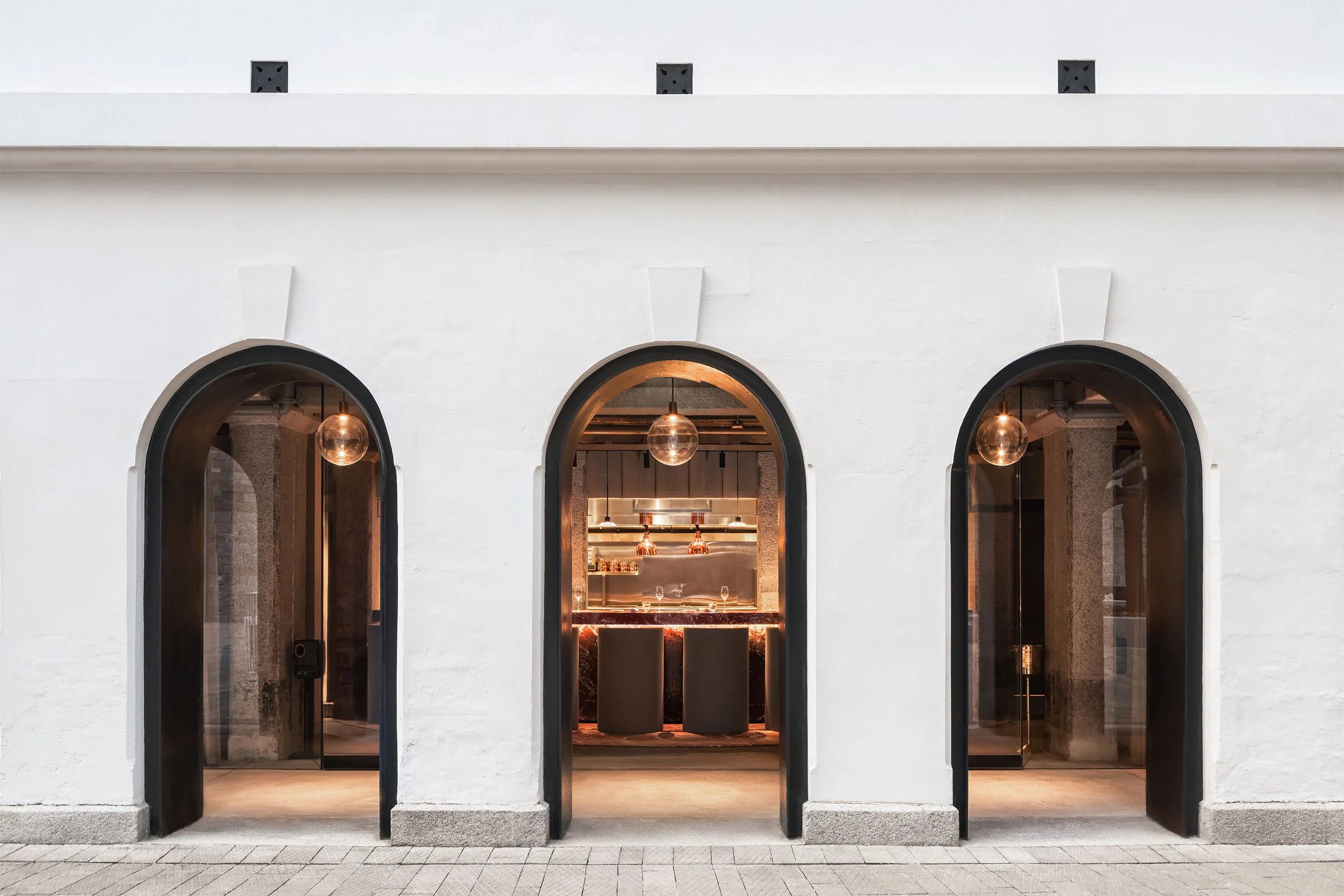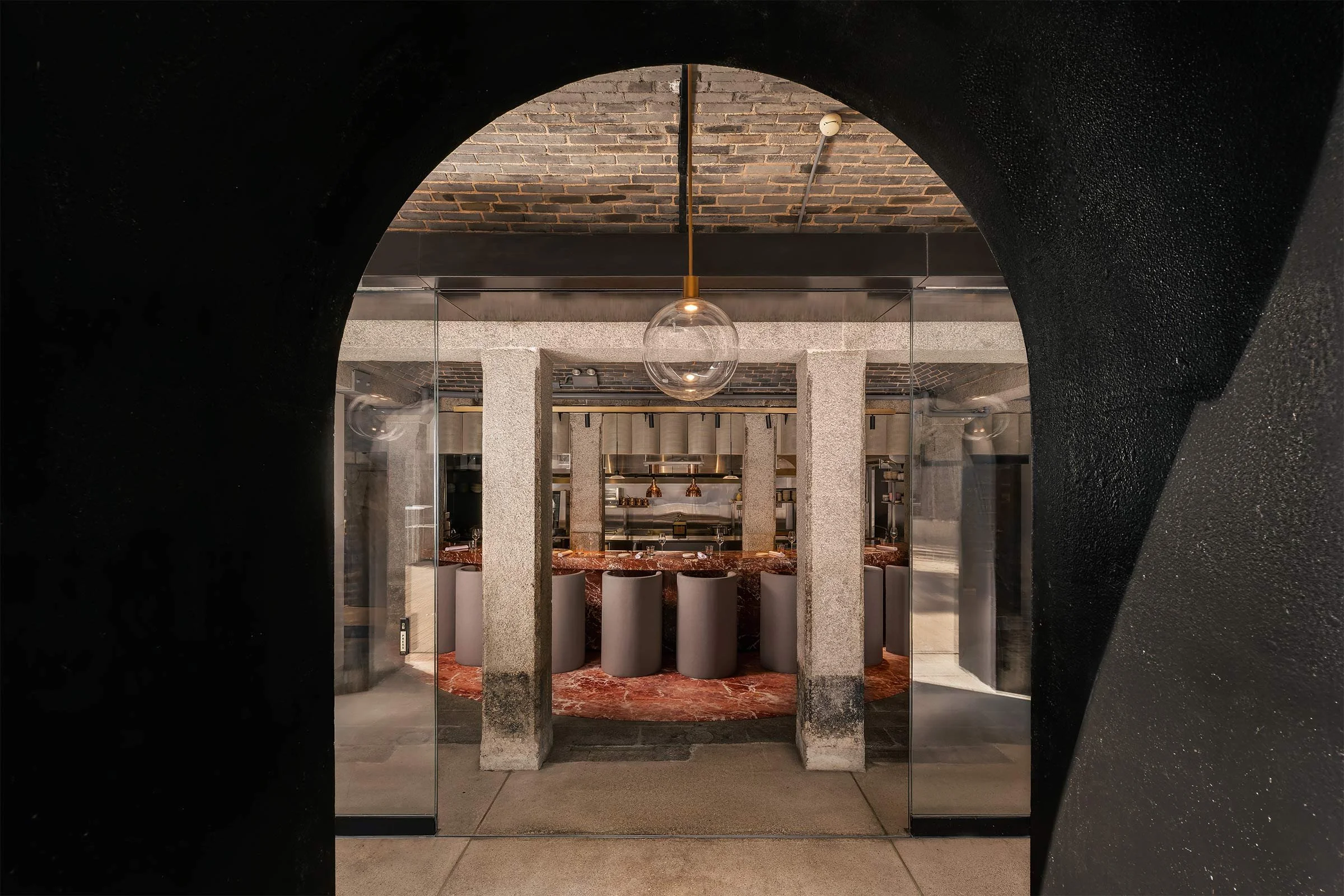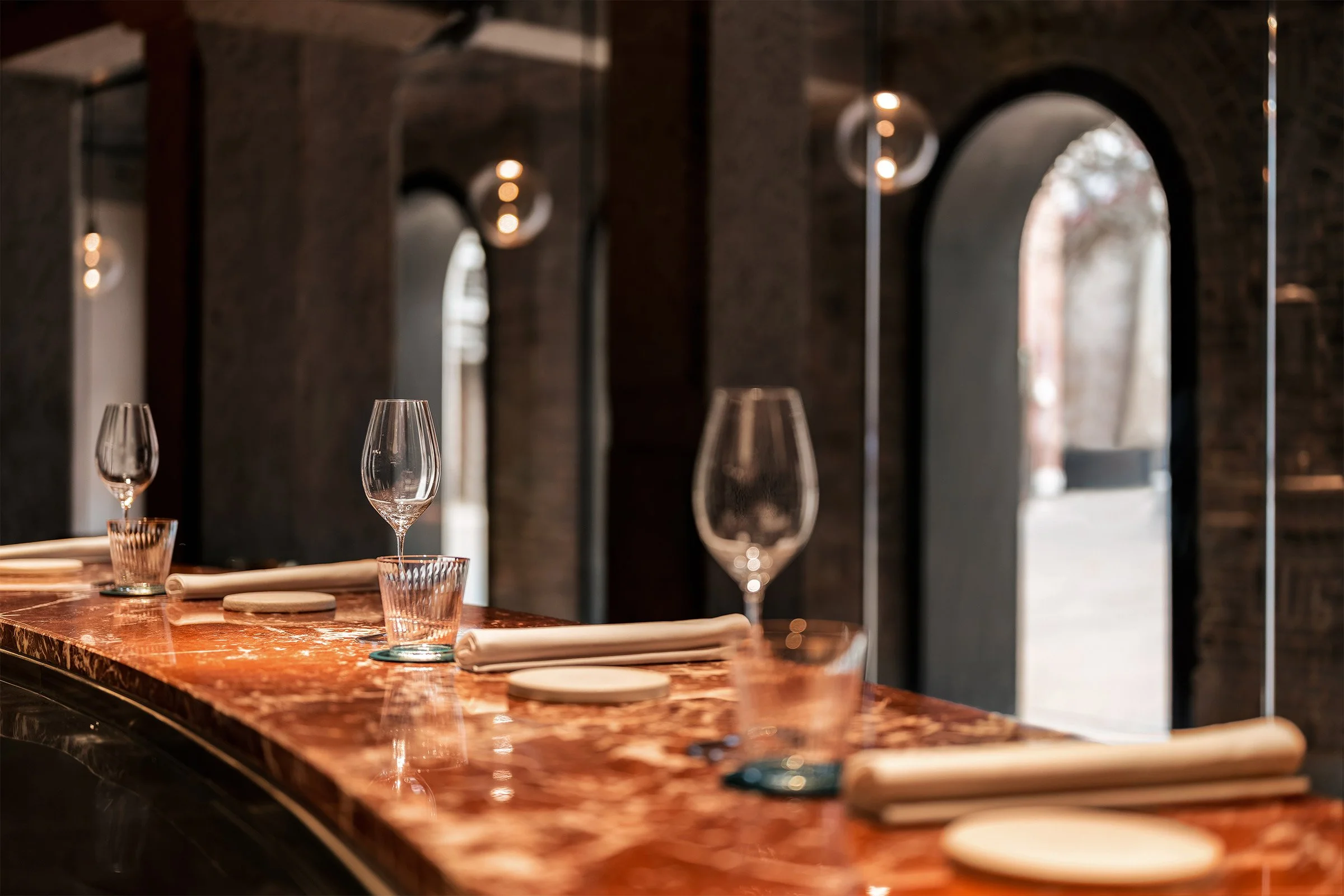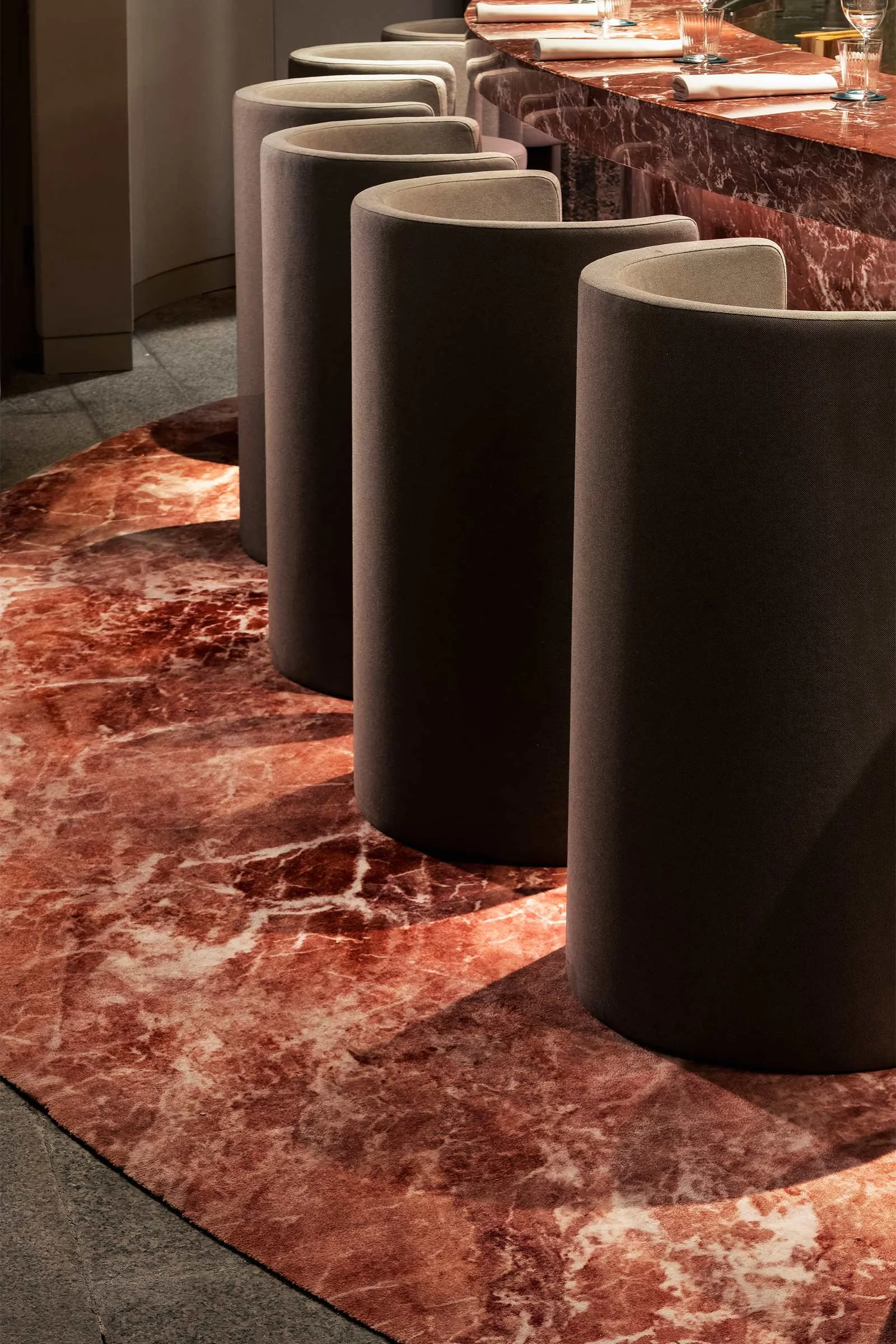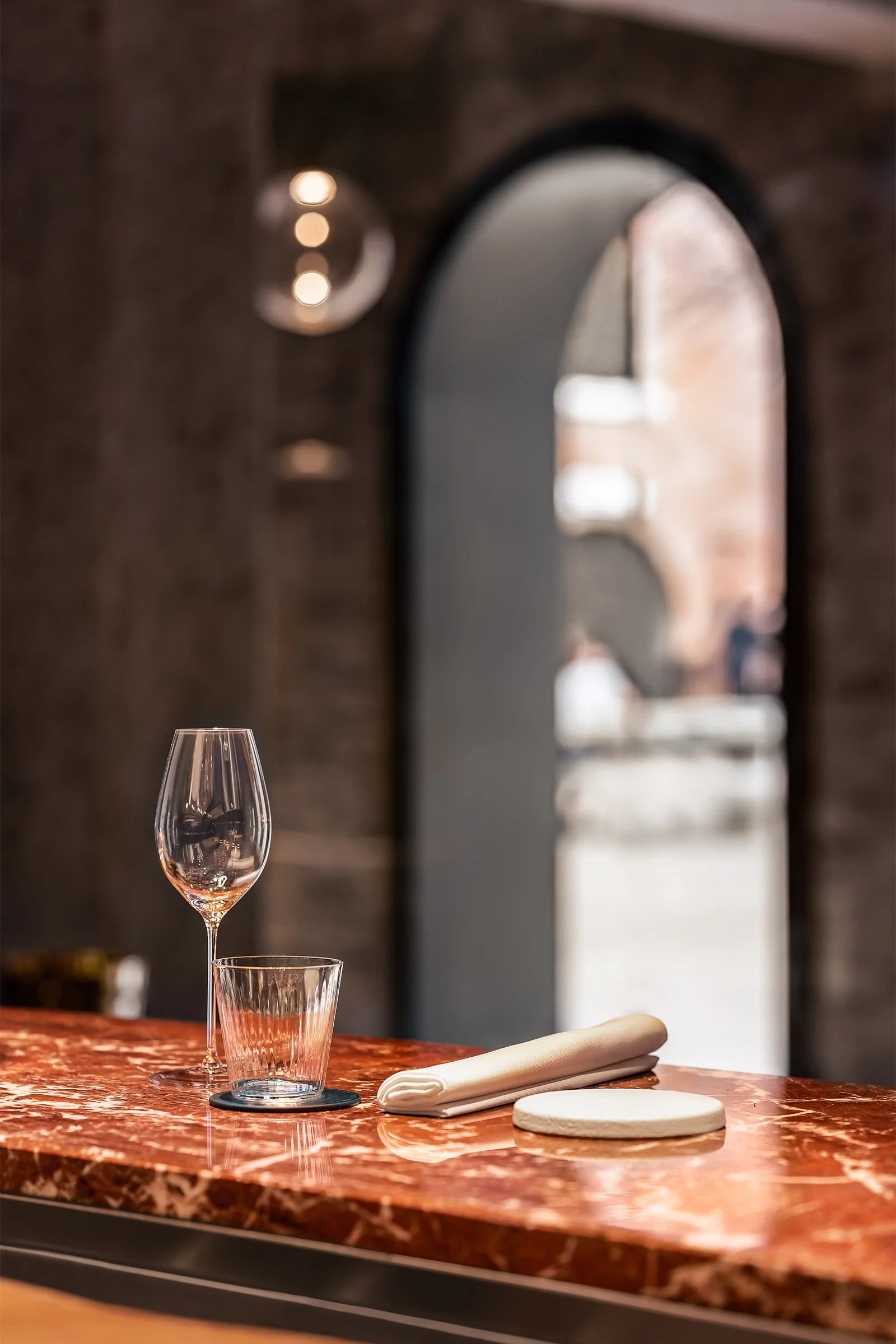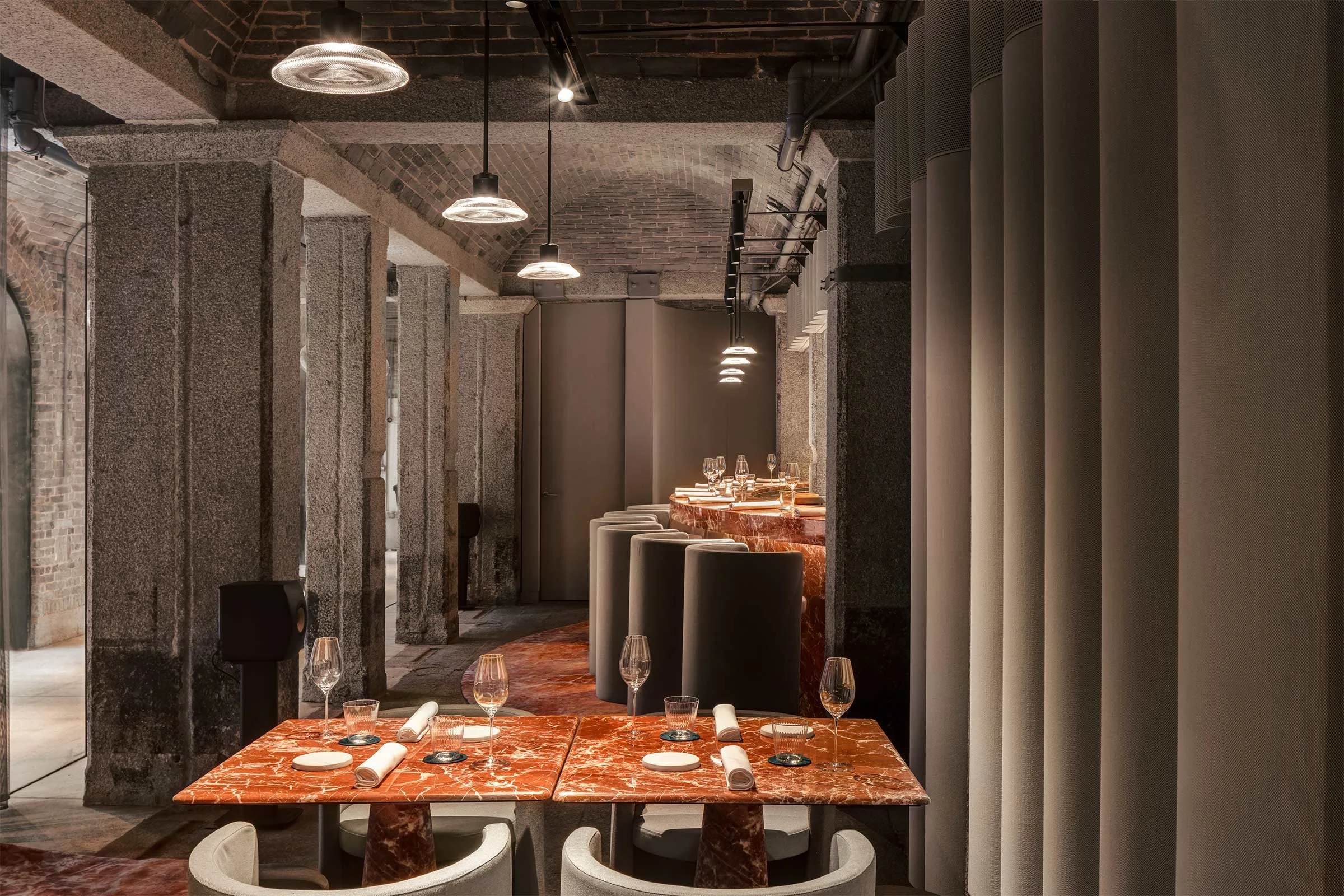A Voyage to Spain

Hidden in a heritage prison building in the heart of Hong Kong, AGORA’s simple and elegant decor realised by international architecture studio COLLECTIVE embodies a sense of earthy sophistication while nodding to its new use
The heritage Tai Kwun complex, a 19th-century police station in Hong Kong’s Central district, is home to the second venture of Madrid-born chef Antonio Oviedo in collaboration with JIA Group. Agora reinterprets Spanish fine dining with modernity and elegance through innovative twists and seasonal sensibility — a personality that architecture studio COLLECTIVE translated admirably into the intimate 24-seat space.
Looking out to a large paved former prison yard through a veranda lined with narrow arches, the restaurant is partly sheltered from the outside, revealing its tones and contours selectively through full-length windows. Seamless glass doors open directly onto the chef’s counter, a spectacular red and white marble curve that houses the open kitchen and contrasts with the building’s existing granite and grey brick finishes. ‘The idea was to create a very strong material gesture with the red stone that you see everywhere in the restaurant,’ says Chi Yan Chan, a director at COLLECTIVE and the main architect who worked on the project. ‘We really needed something that would stand out because the space itself has its own character, so I chose one material and used it consistently throughout the space.’
Defined by a series of three vaults, the unfussy interior plays on the rustic stone and infuses it with a touch of the modern. Walls and chairs are covered in a beige fabric selected to match the existing granite columns. On the floor, incomplete circles of carpet mimic the tone and pattern of the red marble, softening the space and emphasising the selective material palette. Other elements such as the dishware, ceramics and glassware were crafted by Spanish artisans. ‘We retained the original structure of the building with very light interventions,’ says Betty Ng, founder and managing director at COLLECTIVE. ‘The essence of Spain is not literal, but it’s very much about the granite texture, the marble stone colour and the general feeling of warmth.’
To the left on the longitudinal space, a private dining room is anchored by a monolithic table crafted from the same red marble as the chef’s counter. Covering the back wall, a curved structure of full-length columns wrapped in soft fabric that matches the tone of the granite cushions the space and resonates with the building’s distinct arches. ‘We thought, how do we add softness and texture without being decorative?’ says Ng. ‘So we borrowed the architectural motif of the arches and turned it into something practical and functional’.
At the other end of the restaurant, individual tables offer a more relaxed dining experience. Delicate lighting fixtures by Viabizzuno are cantilevered from the side wall to elegantly hang over tables. ‘There’s not a single screw or permanent fixing in the building’s historical brick or granite,’ explains Chan. ‘So we had to cantilever structures out to hang all the lights directly above the tables and the bar’.
An exercise in restraint, AGORA marries simplicity with sophistication, achieving a space that evokes Spain while nodding to the history and heritage of Tai Kwun.
Text / Nina Milhaud


